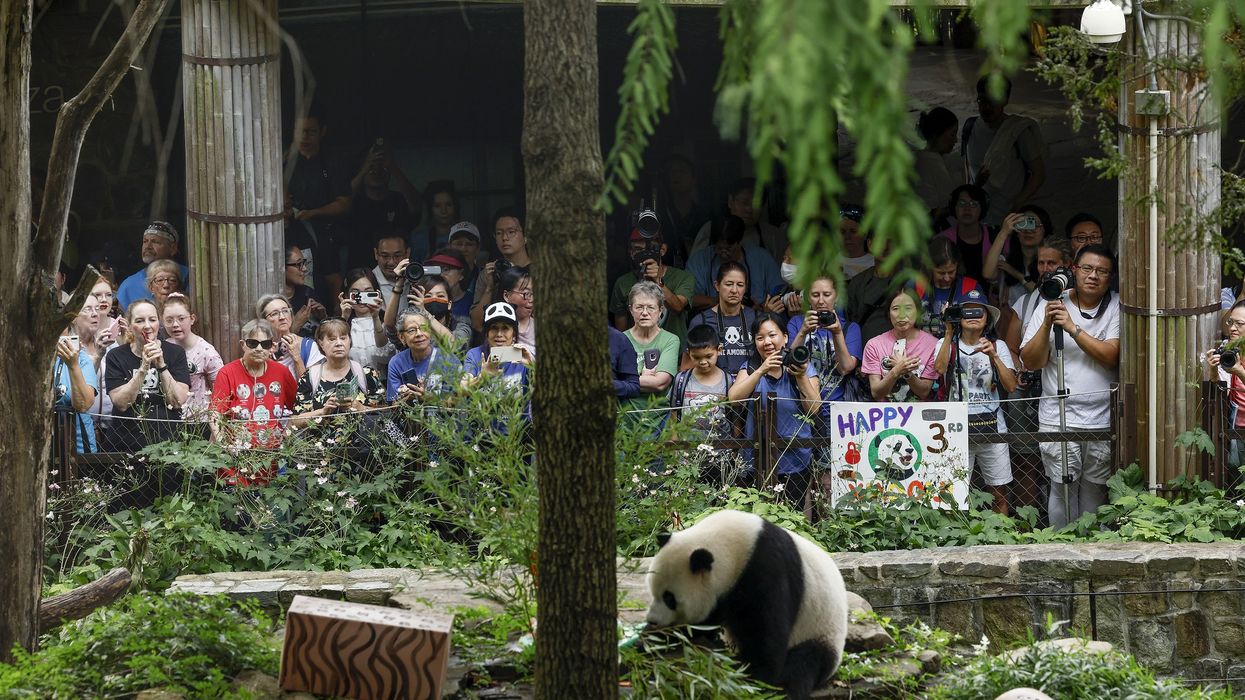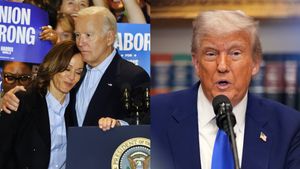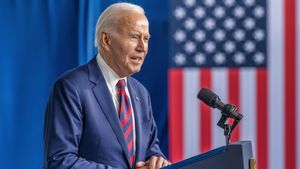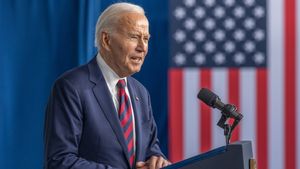
Video Source: Advocate Channel
(CNN) – Three giant pandas left their enclosure at the Smithsonian National Zoo in Washington, DC, and departed by plane back to China on Wednesday, marking the end of more than 50 years of Chinese pandas being housed at the zoo.
The black and white bears – Tian Tian, Mei Xiang, and their youngest cub, Xiao Qi Ji – were transported from the zoo in crates and loaded onto a FedEx aircraft at Dulles International Airport, taking off around 1 p.m.
The Smithsonian National Zoo was the first US zoo to showcase pandas as part of what’s been called “panda diplomacy.”
Zoo staff call it a “hiatus” in their five-decade wildly popular panda program; Chinese officials have yet to say whether it will continue.
And with relations between the two superpowers in a constant state of flux, these national treasures may be finding themselves part of the extension of the diplomatic chaos that has taken over the relationship between the two countries.
Thepandas’ departure from the National Zoo leaves Zoo Atlanta as the only other US zoo to feature pandas from China, and not for much longer. The contracts for Atlanta’s four bears expire next year, with no word on an extension.
It started during the Nixon presidency
China acknowledges the cuddly creatures are used for its “major political and diplomatic needs,” especially in places where it hopes to gain more influence or closer relations. China says its focus is on conservation and research and says the US program has been productive.
“The two sides have formed good cooperative relations, achieved fruitful results and played a positive role in protecting endangered species,” said spokesperson Mao Ning of China’s Ministry of Foreign Affairs.
“The purpose is to better protect endangered species and promote global biodiversity conservation.”
Beijing’s panda diplomacy with Washington kicked off in 1972, following President Richard Nixon’s historic visit to China.
Chairman Mao Zedong’s government gave two giant pandas to the United States in a sign of warming bilateral ties after decades of diplomatic deep freeze.
First lady Pat Nixon welcomed the pandas to the nation’s capital, saying, “They will be enjoyed by the millions of people who come from across the country to visit the nation’s capital each year.”
Seeing the pandas’ popularity rise among Americans, China sent more of thecuddly and charismatic creaturesto other zoos across the United States, eventually loaning them instead of giving them as a gift.
Changing diplomacy
Agreements between China and the US zoos stipulate Beijing owns the pandas and any of their offspring, and they require payment “for the conservation of giant pandas in China.” The National Zoo has paid $500,000 a year; Zoo Atlanta says it has contributed more than $16 million since the start of its program in 1999.
Since giant pandas arrived at the National Zoo in 1972, animal care staff and scientists have studied their biology, behavior, breeding, reproduction, and disease, according to the zoo.
“The Zoo’s giant panda team works closely with colleagues in China to advance conservation efforts for giant pandas in human care and in the wild,” the zoo says on its website.
At the height of the program, there were 15 pandas at one time in the United States, but in the past decade, the numbers have dropped – coinciding with worsening US-China relations. And soon, there could be no more pandas at American zoos.
Earlier this year, videos surfaced on Chinese social media claiming pandas returning from the Memphis Zoo were being abused. Partially fueled by Chinese state media, the claims went viral.
Chinese doctors defended the zoo’s treatment of the pandas, confirming that the giant panda, named YaYa, was suffering from a skin disease, but was in good health.
But some in China still see it as a symbol of America’s bullying and oppression of China, with others highlighting countries such as Russia, which also hosts the animals, as a place where pandas are treated well.
Assuming China chooses not to send over more giant pandas, and Atlanta sends theirs back next year, by the end of 2024 the only panda in zoos throughout all of the Americas would be Xin Xin in Mexico City.
Xin Xin – who at 33 is old for a panda – is owned by Mexico and is a main attraction at the zoo, which is now bracing for a possible surge in visitors.
“For the time being, come to Mexico!” said Fernando Gual Sill, director general of the Chapultepec Zoo in Mexico City. “In Mexico City we have the fortune to have (a panda) and to see it and to enjoy it!”
Pandas around the world
Pandas that are part of China’s loan program are meant to serve as an envoy of friendship between China and the host country, so the fading program in the United States may indicate a diplomatic shift.
Russia, China’s northern neighbor, received a pair of pandas in 2019, with Chinese President Xi Jinping standing alongside Russian President Vladimir Putin as they welcomed the bears to the zoo in Moscow.
Qatar received its first panda last year.
Including the United States, 23 countries have pandas on loan from China, but that number is dwindling. Scotland will lose its two pandas in December when the Edinburgh Zoo must return them to China; Australia’s Adelaide Zoo has its two pandas only for one more year.
The pandas leaving America will head to the Chengdu Research Base of Giant Panda Breeding, where in recent years conservation efforts have proven successful. Pandas are no longer on the endangered species list, and their population has jumped nearly 17% over the past decade, according to Zoo Atlanta.
Still, the total number of giant pandas in China – 1,864 as of the latest census, in 2014 – is considered low for breeding and maintaining a viable population. Only around 61 percent of China’s pandas are protected by reserves, and their habitat is threatened by logging in established forests, which eliminates the large tree hollows pandas like to use for dens, Zoo Atlanta says.
Will the pandas ever return stateside?
Staff at the National Zoo say they’re hopeful China might one day send over more giant pandas. They’re even planning renovations for the soon-to-be vacant panda exhibit.
“We’re hopeful for the future, so we have submitted an application that’s being reviewed,” said Bob Lee, director of animal care at the National Zoo.
Zoo Atlanta’s panda habitat cost $7 million to build ahead of the bears’ arrival in 1999, and assuming the bears leave at the end of their contracted stay, it will now stand empty. Plans for the exhibit, with a welcome sign announcing the “Giant Pandas of Chengdu” and a panda-themed gift shop, aren’t clear.
Remembering how the pandas first came to Washington, zoo visitor Jane Mahalik said she hoped the current first lady might work for their return.
“Pat Nixon got the pandas here,” Mahalik told CNN, “and Jill Biden should go and get these pandas back for us.”
CNN’s Yong Xiong reported from Washington, DC, and New York; Melissa Gray reported from Atlanta; and David Culver reported from Los Angeles and Mexico City. Karol Suarez contributed from Mexico City.
The-CNN-Wire
™ & © 2023 Cable News Network, Inc., a Warner Bros. Discovery Company. All rights reserved.
- 65 Percent of Antarctica's Plants and Animals Could Disappear, Scientists Say ›
- Nearly 80 Bird Species Names With Racist Roots Are About to Be Changed ›
- Moose Play a Big Role in Climate Change ›
- Pandas Are Cute, But What About Saving 'Uncharismatic' Animals? ›
- DC Zoo's Pandas May Return After Biden Meets With Xi Jinping ›


















































